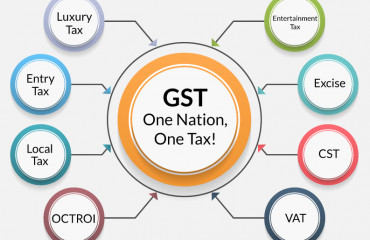
The GST Council in its meeting next week is likely to consider a proposal for making changes in the monthly tax payment form -- GSTR-3B, which would include auto-population of outward supplies from sales return and non-editable tax payment table, officials said.
The move would help curb the menace of fake billing, whereby sellers would show higher sales in GSTR-1 to enable purchasers to claim input tax credit (
), but report suppressed sales in GSTR-3B to lower GST liability.Currently, GSTR-3B of a taxpayer includes auto drafted input tax credit (ITC) statements based on inward and outward B2B supplies and also red flags any mismatch between GSTR-1 and 3B.
As per the changes proposed by the Law Committee of the GST Council, there will be auto-population of values from GTSR-1 into GSTR-3B in specific rows to establish one-to-one correspondence to a large extent between rows of the two return forms, thereby providing clarity to the taxpayer and tax officers.
The change would minimize the requirement of user input in GSTR-3B and ease the GSTR-3B filing process, an official said.
The tax payment table in Form GSTR-3B will be auto-populated from other tables in the form and will be non-editable, as per the amended form recommended by the Law Committee of the Council.
Noting that amendment in Form GSTR-3B, as far as feasible, should flow from amendment in Form GSTR-1, with regard to outward liabilities, the Committee suggested that for giving more clarity to the taxpayers, separate amendment table (for liabilities) may be introduced in GSTR-3B, so that any amendment made in Form GSTR-1 gets reflected in GSTR-3B clearly.
Similarly, an amendment table may also be incorporated in GSTR-3B to show any amendment in the ITC portion, the Committee suggested.
Once the changes proposed by the Law Committee gets an in-principle approval of the GST Council, the revamped form will be put in public domain for stakeholder consultation. The GST Council in a meeting later will then approve the final form.
Currently, taxpayers file statements of outward supplies in GSTR-1 by the 11th day of the subsequent month, while taxes are paid by filing GSTR-3B between 20th, 22nd and 24th of every month for different categories of taxpayers.
Commenting on the proposed changes in GSTR-3B, AMRG & Associates Senior Partner Rajat Mohan said tax filings are set to change for e-commerce operators rendering passenger transportation services, accommodation services, housekeeping services, and cloud kitchens. Such e-commerce players would now be made liable to report supplies on behalf of suppliers in their GSTR -1 and GSTR-3B in separate cells.

